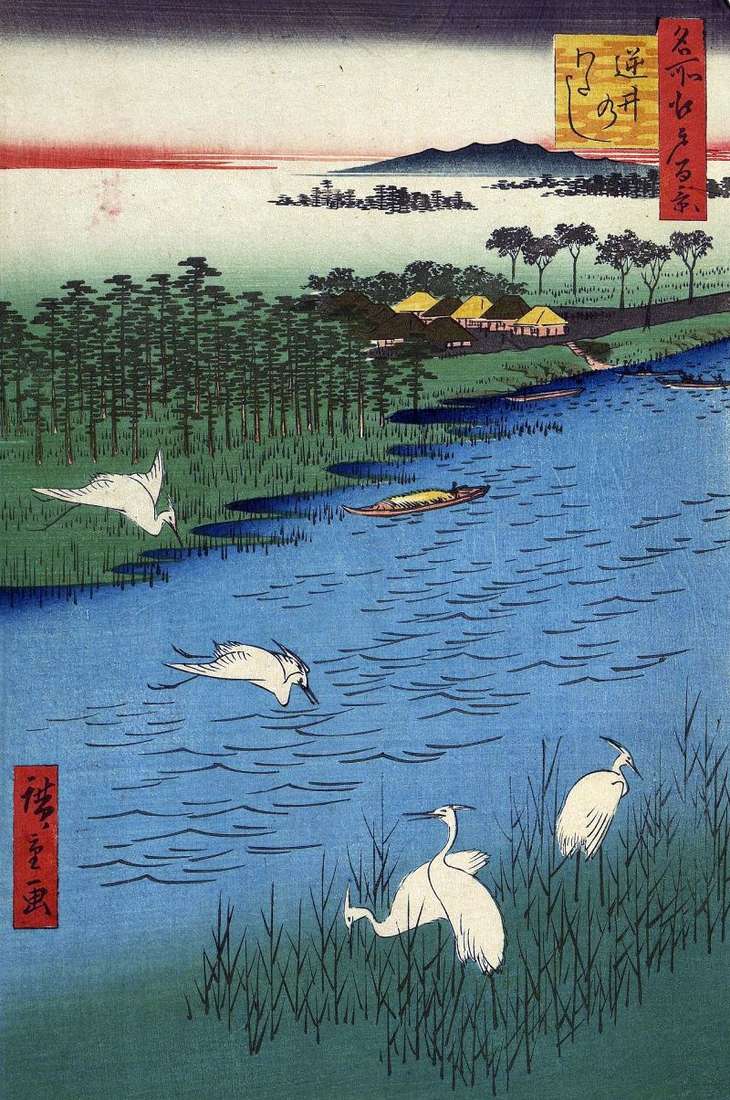
The Sakurakaido tract led into the Simousa-no kuni sakura area, the path traditionally began from the Nihonbashi bridge in Edo. Further, it passed through the Khondze area, along the Tategava River. Then, it was necessary to cross the Nakagawa River, this could be done by using the Sakasai-no Watasi ferry. Later, a new route appeared, which also became known as Sakurakaido. Therefore, the old way was called Moto-Sakurakaido.
The river Tatagava merged with the river Nakagawa, in this place and was the ferry Sakasai. During the tide in the Gulf of Edo, the waters of the Nakagawa River changed their direction, hence the name of the crossing. In engraving, the Nakagawa River flows slowly among calm rice paddies. On the opposite bank you can see the houses of the village of Sakasai no Mur. White birds in the reeds are the Chinese herons karasirasahe. They were the sights of the Sakasai-no Watasi crossing. In the distance you can see the mountains of the peninsula Boso.
The dark blue strip, passing along the center of the Nakagawa River, becomes somewhat wider and brighter in later impressions. The roofs of the village’s scraps stand out against a background of darker greenery. The color of the cartouche becomes more intense.
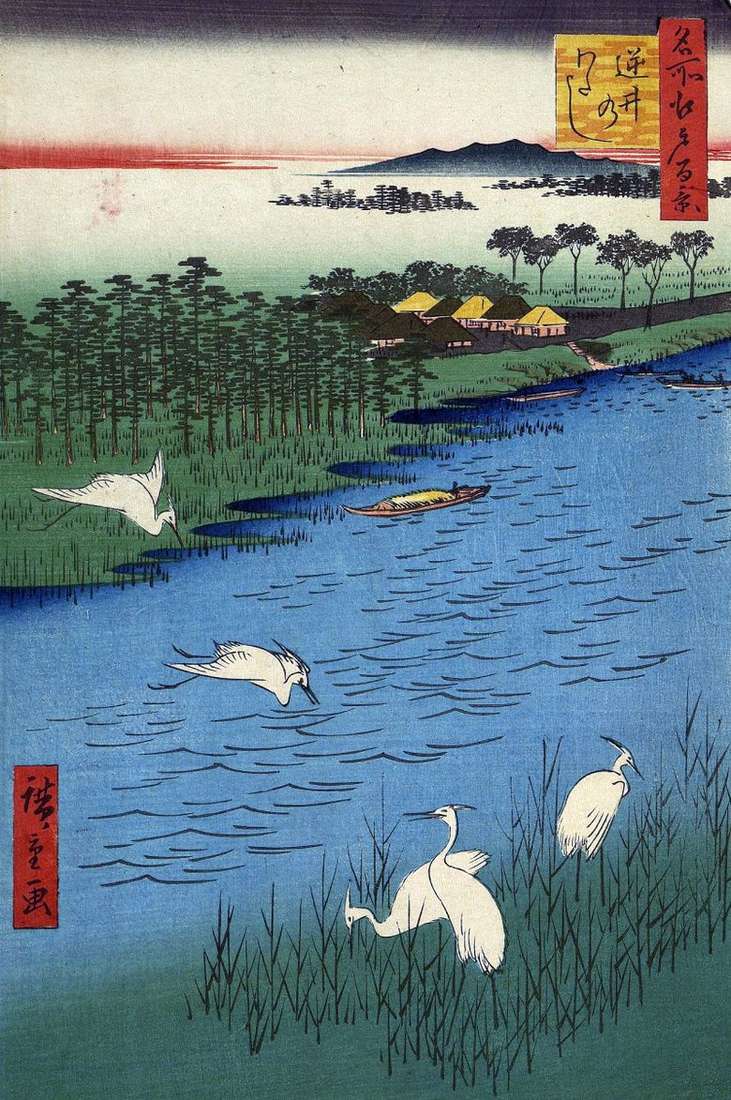 Ferry Sakasai – Utagawa Hiroshige
Ferry Sakasai – Utagawa Hiroshige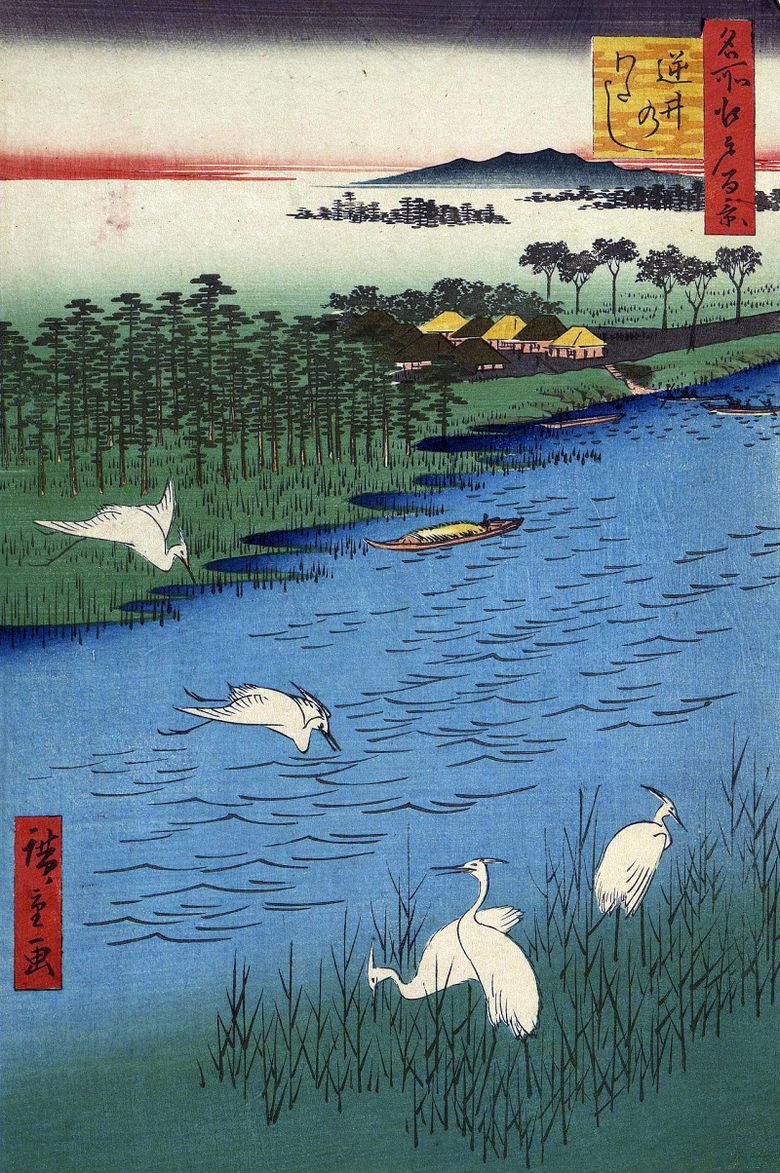 Traversée de Sakasai – Utagawa Hiroshige
Traversée de Sakasai – Utagawa Hiroshige The Nijutsu crossing by Utagawa Hiroshige
The Nijutsu crossing by Utagawa Hiroshige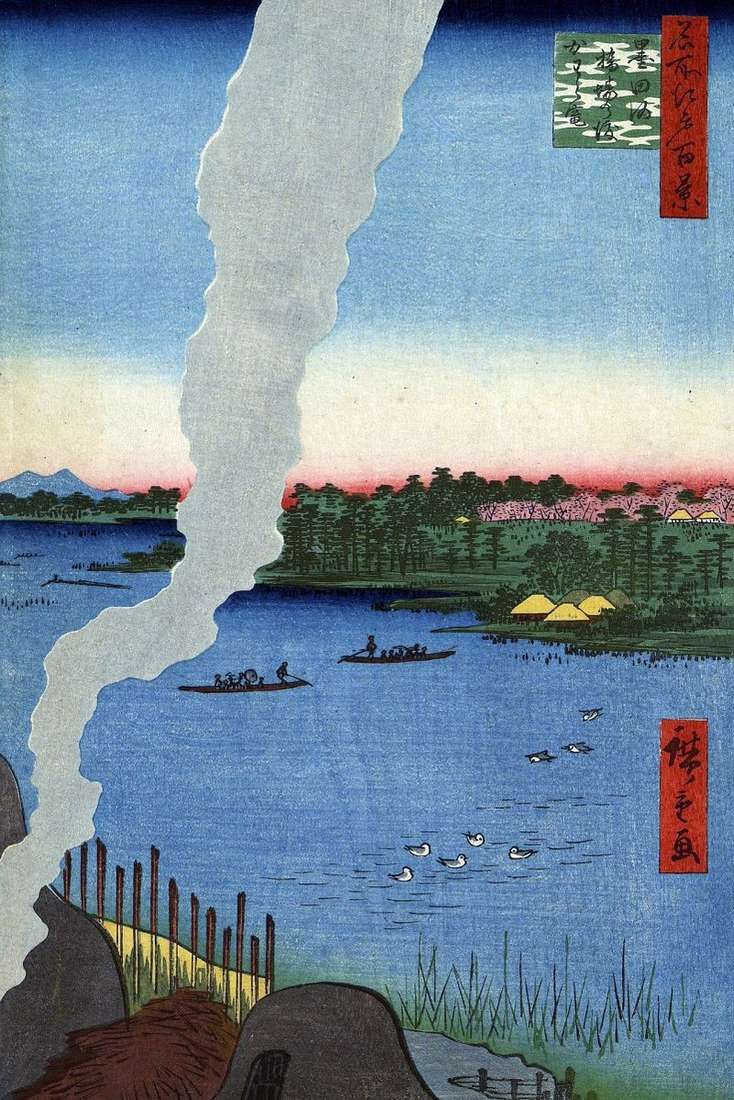 Furnaces for roasting at the crossing of Hasiba no Watasi on the Sumidagawa River by Utagawa Hiroshige
Furnaces for roasting at the crossing of Hasiba no Watasi on the Sumidagawa River by Utagawa Hiroshige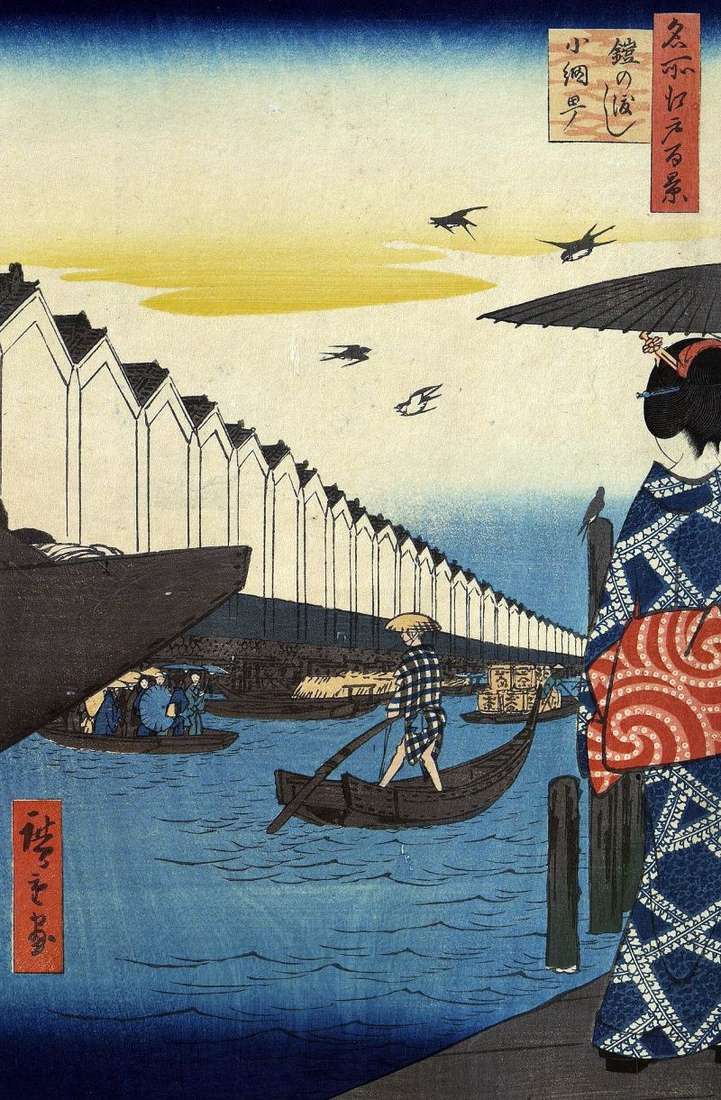 Yeroi-no Watasi crossing to Komite by Utagawa Hiroshige
Yeroi-no Watasi crossing to Komite by Utagawa Hiroshige Crossing Haneda, the sanctuary of Benten by Utagawa Hiroshige
Crossing Haneda, the sanctuary of Benten by Utagawa Hiroshige The Ohashi Bridge in Senju by Utagawa Hiroshige
The Ohashi Bridge in Senju by Utagawa Hiroshige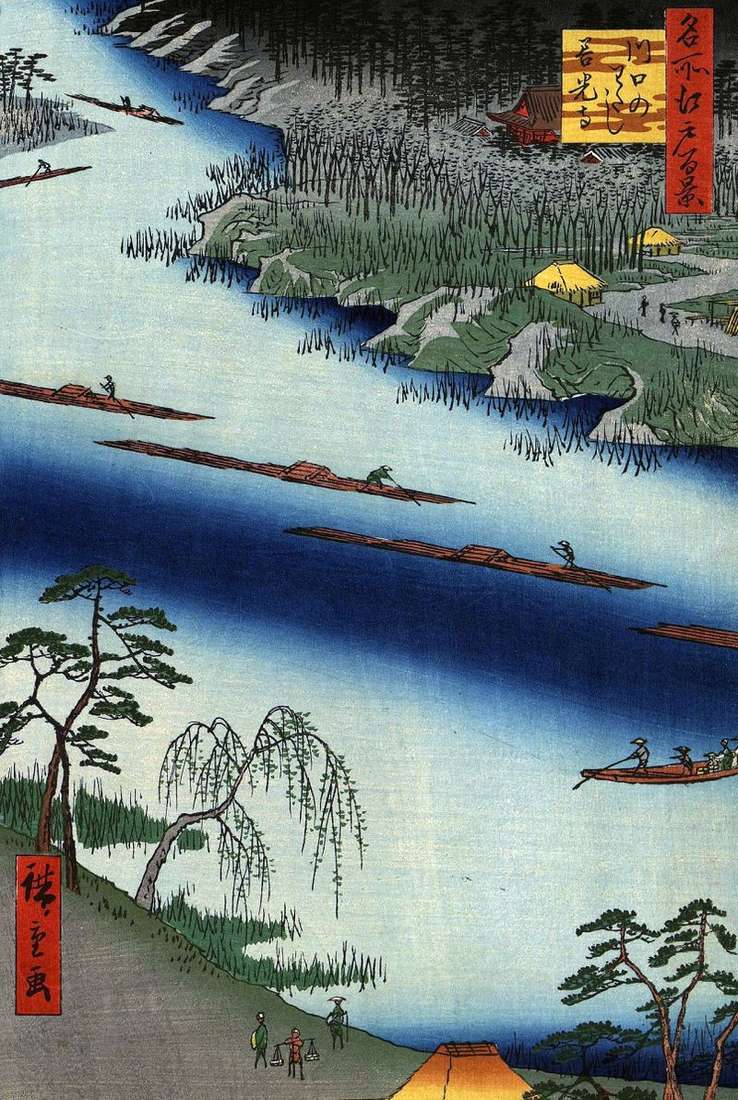 Monastery Zenkoji at the crossing in Kawaguchi no Watasi by Utagawa Hiroshige
Monastery Zenkoji at the crossing in Kawaguchi no Watasi by Utagawa Hiroshige